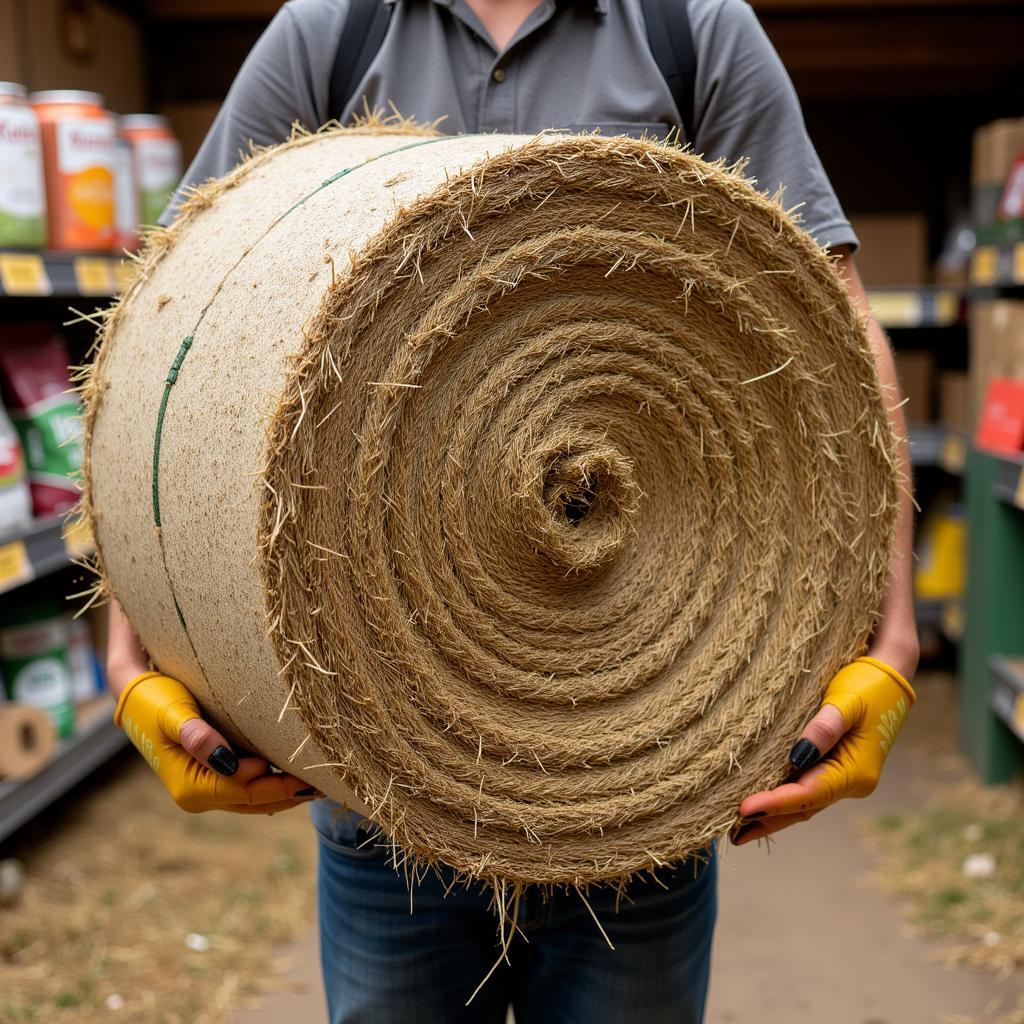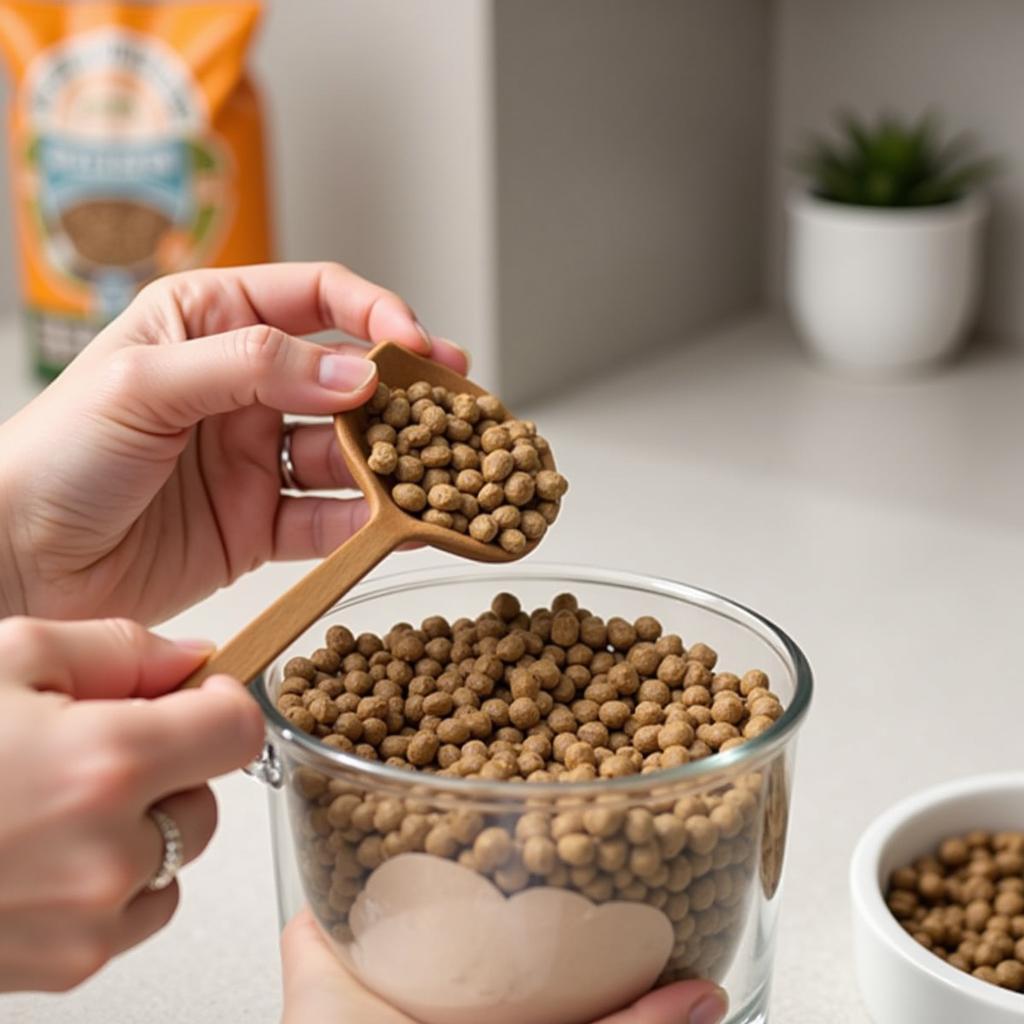So, you’ve welcomed a fluffy little rabbit into your life – congrats! You’re about to discover a world of fluffy cuddles, playful antics, and the occasional thump of disapproval. But before you get lost in those mesmerizing bunny eyes, let’s talk about keeping your furry friend happy and healthy without emptying your wallet. Finding Cheap Rabbit Food that doesn’t compromise on nutrition is entirely possible. With a little know-how, you can ensure your bunny gets the best while you stick to your budget.
Understanding Your Rabbit’s Dietary Needs
Just like us, rabbits need a balanced diet to thrive. Forget the myth of carrots being their sole sustenance; these long-eared companions require a diet rich in fiber, moderate in calories, and low in fat. Here’s a breakdown of the essentials:
- Hay: This isn’t just bedding; it’s the cornerstone of a rabbit’s diet! Hay provides essential fiber for digestion and helps wear down their constantly growing teeth. Aim for unlimited, fresh hay, like Timothy hay, which should make up about 70-80% of their daily intake.
- Fresh Veggies: Think leafy greens like romaine lettuce, cilantro, and parsley. These provide vital vitamins and minerals. Introduce new veggies gradually to avoid digestive upsets.
- Pellets: Choose a high-fiber, Timothy hay-based pellet. Avoid mixes with seeds, nuts, or colorful bits, as these are often high in calories and can lead to picky eating habits.
- Water: Fresh, clean water is crucial. Provide it in a heavy ceramic bowl that’s difficult to tip over.
Budget-Friendly Ways to Feed Your Rabbit
Now, let’s talk cost-cutting strategies:
1. Buy Hay in Bulk
 Buying Hay in Bulk
Buying Hay in Bulk
Just like buying groceries in bulk often saves money, the same applies to hay. Look for local farm supply stores or online retailers that offer discounts on large quantities. You can store the excess hay in a cool, dry place to maintain its freshness.
2. Grow Your Own Veggies
Got a green thumb? Why not cultivate a mini rabbit garden? Lettuce, kale, cilantro, and parsley are relatively easy to grow and can significantly reduce your grocery bills. Plus, your bunny will enjoy the fresh, pesticide-free treats.
3. Don’t Overfeed Pellets
 Measuring Rabbit Food Pellets
Measuring Rabbit Food Pellets
While convenient, pellets should constitute a small portion of your rabbit’s diet. Overfeeding pellets can lead to obesity and other health issues. Follow the feeding guidelines on the package and adjust based on your rabbit’s age, activity level, and overall health.
4. Shop Around for Deals
Keep an eye out for sales and discounts on rabbit food, both online and in physical stores. Signing up for newsletters or loyalty programs can often give you access to exclusive deals.
Is “Cheap” Rabbit Food Ever a Good Idea?
While saving money is important, it shouldn’t come at the expense of your rabbit’s well-being. Here’s when “cheap” can be a red flag:
- Low-Quality Ingredients: Avoid foods with fillers, artificial colors, flavors, or preservatives. These offer little nutritional value and can be harmful in the long run.
- Unidentified Hay Types: Stick to Timothy, orchard, or oat hay. Avoid “hay blends” that don’t specify the type of hay, as these may contain less nutritious or even harmful varieties.
- Moldy or Dusty Hay: Ensure the hay you purchase is fresh, dry, and free from mold or dust, which can cause respiratory problems in rabbits.
Signs Your Rabbit’s Diet Needs a Check-Up
- Weight Loss or Gain: Sudden changes in weight can indicate dietary imbalances.
- Changes in Droppings: Rabbit droppings should be firm and relatively uniform. Soft, watery, or irregularly shaped droppings can signal digestive issues.
- Loss of Appetite or Lethargy: These can be signs of various health problems, including dietary deficiencies.
Investing in Your Bunny’s Health
Remember, providing a healthy diet is one of the most important ways to ensure your rabbit lives a long, happy life. While cheap rabbit food options exist, prioritize quality over rock-bottom prices. A little research and planning can go a long way in keeping your bunny hopping with joy!
FAQs
Can I feed my rabbit grass clippings from my lawn?
It’s best to avoid feeding grass clippings to your rabbit. Lawn grass is often treated with pesticides and herbicides that can be harmful to rabbits.
How can I tell if my rabbit’s hay is fresh?
Fresh hay should have a pleasant, slightly sweet aroma and a greenish-brown color. Avoid hay that smells musty, dusty, or has visible mold.
My rabbit is a picky eater. What can I do?
Introduce new foods gradually and offer a variety of fresh vegetables. You can also try hanging hay feeders to make it more enticing.
How much should I feed my rabbit daily?
The amount of food your rabbit needs will vary depending on its size, age, and activity level. Consult with your veterinarian for personalized feeding recommendations.
Can I give my rabbit treats?
Occasional treats are okay, but stick to small amounts of rabbit-safe fruits like apple slices (without seeds) or banana. Avoid sugary treats or those high in carbohydrates.
What should I do if my rabbit stops eating?
Loss of appetite in rabbits can be a sign of a serious medical condition. If your rabbit hasn’t eaten in over 12 hours, contact your veterinarian immediately.
Where can I learn more about rabbit care?
Many online resources and organizations are dedicated to rabbit welfare. The House Rabbit Society (HRS) is an excellent resource for reliable information on rabbit care, health, and behavior.
Need help finding the right food for your furry friend?
Contact us! At Mina Cones Food, we’re passionate about helping pet owners provide the best for their companions. Reach out to our team at 02437655121, email us at minacones@gmail.com, or visit us at 3PGH+8R9, ĐT70A, thôn Trung, Bắc Từ Liêm, Hà Nội, Việt Nam. We’re here to assist you 24/7.